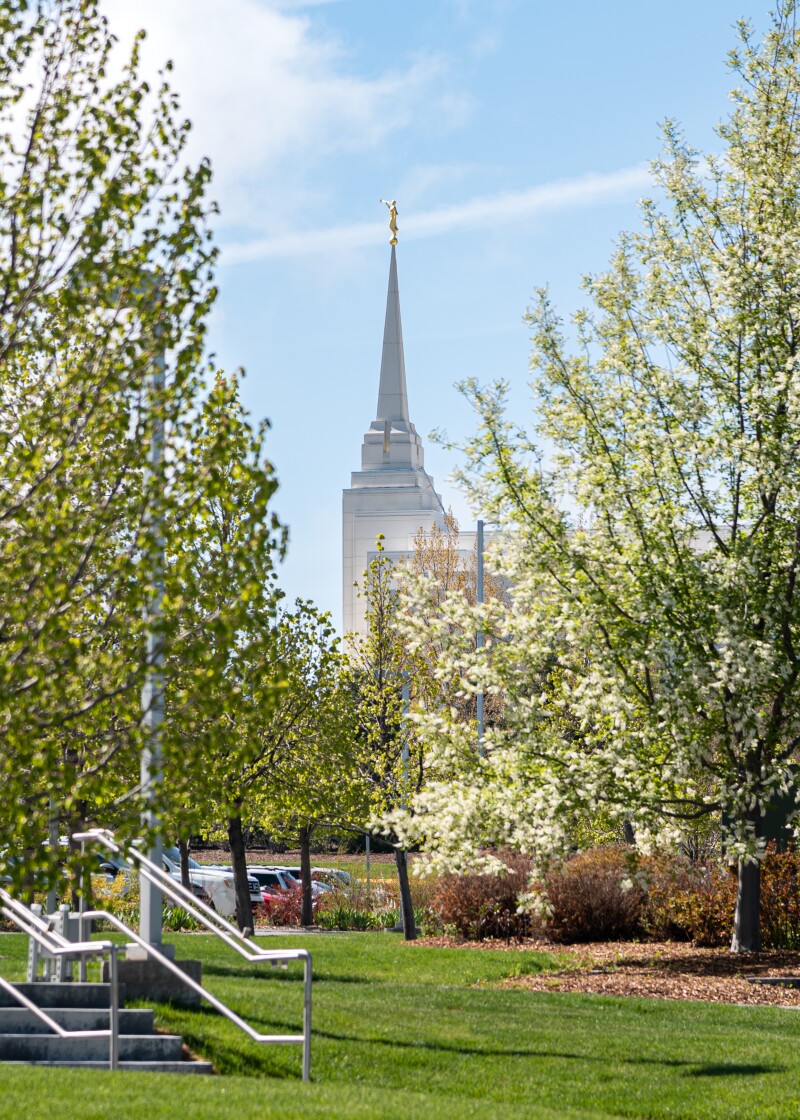Conservation

BYU-I has made energy conservation a priority in new construction as well as with renovations in existing buildings. BYU-I has invested significantly in constructing methods that provide long-term energy savings that exceed the Idaho State Energy Code and NFPA 70.
- Variable speed drives for motors in the heating, ventilating, and air conditioning (HVAC) systems that match pump and fan speed to building requirements. This allows a modulating system, such as chilled water, to be controlled to a level that is only required by the level of demand.
- EPDM is our standard roof material. Ethylene propylene diene monomer (EPDM) has many sustainable benefits; including its outstanding weathering characteristics, flexibility, durability, hail resistance, and life cycle costs. However, when seeking that EPDM provides similar energy savings as its white, non-EPDM, counterparts, especially in this climate zone.
- Exhaust fans with carbon-monoxide sensors that run fans only when needed.
- Efficient lighting fixtures and lamps, programmable lighting control systems and occupancy or photocell sensors control both internal and external campus lighting after hours or when buildings or portions of buildings are unoccupied.
- Air Handling Unit "Economizers", which allow the increased use of outside air to provide air conditioning when temperatures allow, thus reducing the demand for mechanical refrigeration systems which require electricity to operate motor-driven compressors.
- High-efficiency transformers for both primary energy conversion and internal building distribution systems result in lower power conversion losses and less heat generation.
- Occupancy sensor lighting controls are typically installed in areas that are not used continuously.
- Envelope insulation has been improved moving from CMU exterior walls to metal studs with batt insulation.
- Thermal ice storage has been incorporated on many BYU-I facilities over the past 15 years in an effort to reduce peak demand load. New facilities that have been constructed with thermal storage are as follows: Taylor, Kimball, Ricks, and Spori. Other buildings have added thermal storage as a retrofit: Romney and McKay.
- Thermally improved aluminum frames and insulated glazing with low-e film replacing single glazed and solid aluminum frames.
- West and south-facing windows receive window coverings to reduce heat gain.
- Most new carpeting procured is made in whole or in part from recycled carpets.
- Low or no VOC paints
Retrofits
- Occupancy Sensors to control lighting have been selectively retrofitted in most BYU-I buildings. All new buildings beginning with the Manwaring Center and Auditorium include these sensors as part of the base building package.
- Labs are motion sensored 7x24x365
- Override switches available for after-hours work are installed in approximately 50% of our buildings
- Chiller Plant renovations in multiple buildings which reconfigured pumping systems and resequenced operations resulted in 980,320 annual kWh savings per year or $56,859 per year savings going forward.
- Steam and condensate lines have been upgraded with new insulation (Gilsulate 500 XL), this retrofit has proven to save thousands of dollars in energy savings. Heating loads at the Central Plant in 1997 were at approximately 47,000 lbs of steam per hour during peak winter loads, with the addition of over 1 million square feet to campus winter peak loads during the winter of 2009-2010 peak was at approximately 47,000 lbs. per hour. The insulation retrofit along with higher student loads has allowed the campus to increase in size yet maintain steam production at the same level.
- High-efficiency motors are installed when retrofitting motors and pumps.
Other Evaluations
BYU-I has evaluated additional energy savings opportunities that are incremental in savings, but collectively add up to large savings. Some of the recent projects implemented are as follows:
- LED exit sign replacement: Program to replace existing incandescent or fluorescent exit signs with low wattage LED exit signs. Estimated energy savings $613/year.
- Daylight Harvesting is being done in the Crossroads of the MC, Snow Hallways and Lobby, Thors Hall in the Hart, University Operations Conference Room, Ricks, Smith, Hinckley, Spori and Kimball
- Wide scale early replacement of major components in our chiller plants. At present, even though new technology chillers are more efficient, they aren't cost-justified considering the capital cost and the reduced energy consumption alone. Thus, replacement of major components in our existing chillers that are heavy energy users are being replaced. If electric rates increase significantly, early replacement of total equipment could be implemented.
- Reduction in the total number of dedicated computer labs.
- Cutting Edge Trial---Installed an occupancy sensor in Ricks 131 along with a new low voltage switching system, this allows us to operate more than one switch on the sensor, it also can control an auxiliary contact in series with the sensor to drive the VAV into unoccupied mode. We will also use a temporary sensor that detects lights and occupancy of that room to record the times that the lights and night set back would be in use or not, and try to determine the savings from that.
Good, simple habits to conserve energy in your home.
